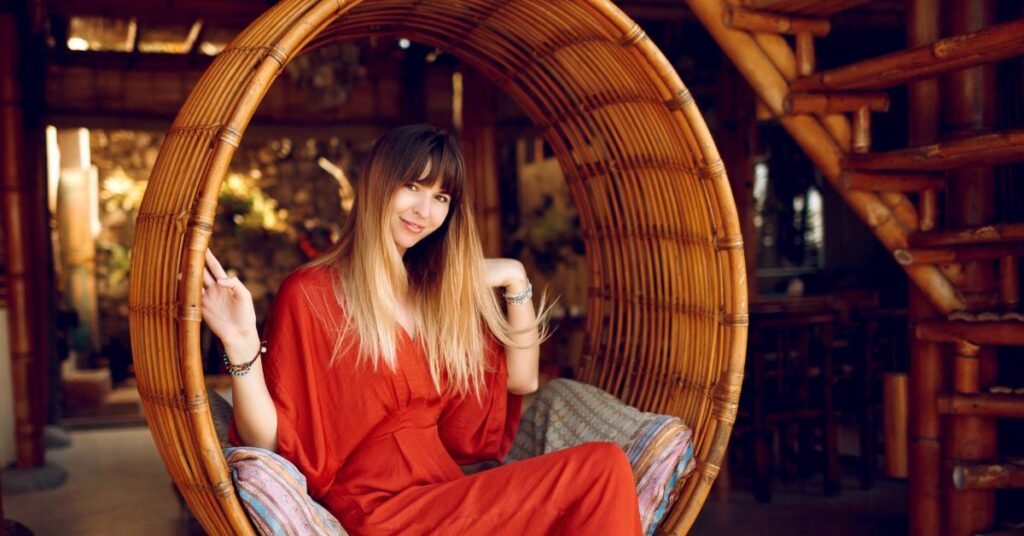Quick Answer / Key Takeaway
The term tumbons refers to a surprisingly versatile concept—ranging from chic, foldable lounge chairs to culturally rich textile pieces—depending on context. It integrates comfort, portability, style and even heritage in one package.
Introduction
When you first encounter the word tumbons, you might think it’s a typo or a new slang. But tucked away in lifestyle and design circles, tumbons has grown into a noteworthy topic: whether used to describe a sleek outdoor chair or a culturally significant textile, the word tumbons is increasingly appearing in search engines and conversations. Understanding what tumbons means—and why it matters—gives you a window into shifting consumer tastes, culture and design in 2025.
Background / How Tumbons Works
A good place to start is unpacking what tumbons actually refers to. The word appears across multiple sectors, and the meaning shifts depending on the context:
Tumbons as Outdoor Furniture
In the realm of lifestyle and home furnishings, “tumbons” often means foldable lounge chairs designed for comfort, portability, and versatility.
- These chairs typically use lightweight frames (aluminium, steel) and breathable fabrics.
- They are intended for outdoor use: gardens, terraces, poolside, beaches.
- Many models emphasise convenience: foldability, transportability, simple storage.
Tumbons as Cultural Textiles or Traditional Items
In another vein, the word is used to describe garments or textiles with cultural heritage—pieces that reflect identity, craftsmanship and tradition.
- In some regions, “tumbons” are described as woven or hand-crafted fabrics with patterns that tell community stories.
- These types of tumbons are valued for their heritage: the stitching, the motifs, the cultural meanings.
Why the Multiple Meanings?
The dual meaning suggests the word “tumbons” may have been adopted commonly in design-led marketing and lifestyle culture, and then extended metaphorically to cultural artifacts. The common thread (no pun intended) is form + story: whether a lounge chair or a textile, a tumbon combines functional design with narrative or identity.
Why People Search for Tumbons
There are several reasons why people look up the keyword tumbons:
- Outdoor living trend: As more people focus on outdoor spaces—balconies, patios, gardens—the demand for stylish, comfortable and portable furniture rises. Tumbons as lounge chairs hit this sweet spot.
- Compact living & flexibility: In an era of smaller homes and multifunctional spaces, furniture that folds, moves and adapts appeals strongly. Tumbons answer that need.
- Cultural curiosity / heritage revival: For textiles or craft pieces labelled as tumbons, people search to understand meaning, heritage, authenticity and style.
- Fashion & influencer impact: Instagram and Pinterest feature comfort-meets-design pieces; when you see a vibrant piece tagged “tumbons,” you might search to learn more.
- Design-led lifestyle choices: Modern consumers don’t just buy function—they buy story. Whether a chair or a textile, the story behind tumbons adds value.
Thus, the keyword appeals both to practical shoppers (looking for the right piece of furniture) and cultural-interested individuals (looking for craft, story, heritage).
ALSO READ: Literoticatags: How Smart Tagging Shapes Modern Online Fiction
Is Tumbons Safe / Legal / Worth It?
Safety & Quality
When “tumbons” refers to furniture:
- You should check load capacity, frame strength, weather resistance. Some models are built for outdoors but may not withstand heavy use or exposure to elements.
- On the textile/craft side: authenticity and ethical sourcing matter. A “tumbons” labelled piece may be mass-produced without respecting artisan traditions, which affects value.
Legal & Authenticity Issues
- The term “tumbons” doesn’t appear to have a regulated trademark or protected status, so many products may use it loosely.
- If you’re buying a craft “tumbon” from a cultural tradition, verify provenance to ensure it’s not a generic imitation.
Is It Worth It?
- For outdoor furniture: If you value portability, style and versatility, then a tumbon-style chair can be a strong buy—especially if your space supports outdoor lounging.
- For cultural textile pieces: If you appreciate craftsmanship and heritage, owning an authentic tumbons piece can be worth it—but you’ll need to look past hype and evaluate quality, origin and story.
In short: yes, it can be worth it—but only if you approach it with informed criteria (materials, craftsmanship, use case) rather than just the label “tumbons.”
Major Updates or News about Tumbons
- Recent lifestyle blogs report a surge in interest for “tumbons” as part of the minimalist / outdoor furniture movement.
- Craft-culture websites highlight efforts to document the “tumbons” tradition—how younger generations are reviving weaving and authenticity behind the term.
- Sustainable design brands are releasing “eco-tumbons” chairs made from recycled materials, promoting both style and environmental responsibility.
- Influencer posts: Many Instagram feeds feature pieces tagged #tumbons or “my tumbon lounge” in outdoor settings, driving consumer awareness.
These updates signal that tumbons is not static—it’s evolving along with design trends, sustainability movements and cultural reconnections.
The Bigger Impact of Tumbons in 2025
In 2025, the significance of tumbons extends beyond a mere product label. Here’s how it impacts broader themes:
Outdoor & Hybrid Living
As remote work continues and home becomes more multipurpose, outdoor-living furniture like tumbons chairs supports that shift. They enable patios or balconies to become extensions of living space.
Cultural & Craft Awareness
When the word refers to textiles, tumbons highlight a resurgence of interest in heritage, local craftsmanship and cultural identity. People increasingly value objects with provenance rather than mass-produced generic goods.
Sustainability & Materials Innovation
Tumbons serve as a case study in how design meets environmental consciousness—lightweight, foldable furniture built from recycled plastics, breathable fabrics and efficient storage supports circular-economy thinking.
Branding & Lifestyle Vocabulary
“Tumbons” has become part of the lifestyle vocabulary—signaling that consumers don’t just want a chair or a fabric piece, they want something labelled with story, meaning and identity. That kind of branding shapes how products are designed and marketed.
Globalisation and Fusion
The dual meaning (furniture + textile) shows how terms cross industries and geographies. As the design world globalises, words like tumbons fuse utility with tradition, appealing to a global audience that treasures both functionality and meaning.
Hence, in 2025, tumbons is more than a keyword—it’s a symbol of how design, culture and commerce intersect.
Best Alternatives to Tumbons
If you’re exploring options aside from tumbons (or looking for alternatives depending on your meaning), here are some alternatives:
- For outdoor lounge furniture: Look at “zero-gravity chairs”, “reclining deck chairs”, “portable chaise lounges”. These provide similar comfort and functionality without the specific “tumbons” label.
- For traditional craft textiles: Explore “handwoven kanthas”, “ikat throws”, “artisan upholsteries” depending on region. These are well-documented craft items with transparent heritage.
- For hybrid furniture-craft fusion: Some premium brands offer “designer lounge chairs with heritage textiles” — combining the utility of a chair with the story of a textile.
- For compact indoor/outdoor versatile seating: “Fold-flat camping loungers”, “multi-purpose bean-bag chairs” or “hammock chairs” might serve your needs if portability or comfort is key.
By comparing features (material, portability, heritage factor, cost), you’ll decide whether you want something labelled tumbons or an alternative that fits your needs better.
Final Take
In my expert opinion, the keyword tumbons has value—especially if you approach it with clarity about what you’re getting. If you’re shopping for outdoor furniture and encounter a “tumbon” lounge chair, treat it like any design investment: check materials, comfort, storage and durability. If you’re buying a textile or craft piece called a tumbon, dig into its origins, craftsmanship and authenticity. The term may be trendy, but smart choice still matters. Ultimately, whether a functional lounge chair or a culturally rich textile piece, tumbons offers a compelling mix of style, utility and story that aligns well with 2025’s consumer values.
FAQs
Q1: What exactly does “tumbons” mean?
A: Depending on context, tumbons can mean a fold-out lounge chair designed for outdoor use, or a culturally significant textile/artisan piece with heritage value.
Q2: Is a “tumbon” lounge chair better than a regular outdoor chair?
A: It depends on your needs. A tumbon chair often emphasises portability, fold-flat storage and a relaxed posture. A regular outdoor chair might offer more rigidity or formal support.
Q3: How do I know if a tumbons textile piece is authentic?
A: Look for provenance (where it was made), artisan information, materials (natural fibres vs synthetic imitations), and craftsmanship detail (hand-weaving, hand-stitched patterns).
Q4: Are tumbons chairs weather-proof?
A: Many are designed for outdoor use, but quality varies. Check cloth and frame materials, treatments for UV or moisture, and storage guidelines. Even the best pieces need care.
Q5: Will the “tumbons” trend last?
A: The key elements it taps—outdoor living, portability, heritage craft—are longer term trends. If the label “tumbons” is backed by quality and meaning, it may endure; if it becomes a marketing buzzword without substance, its longevity will depend on value delivery.







